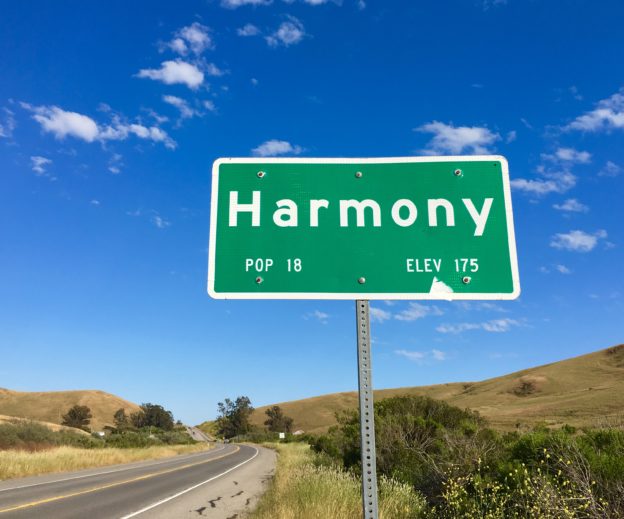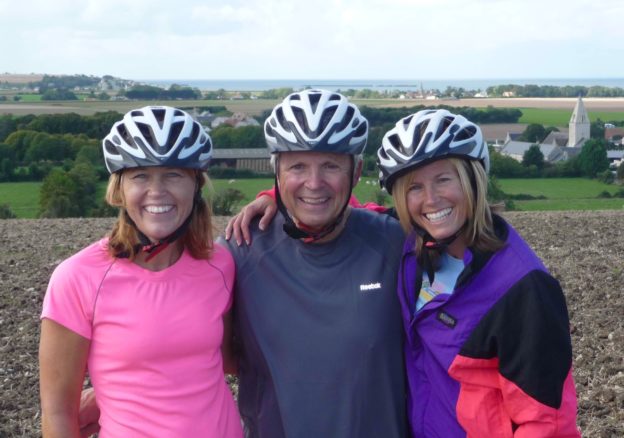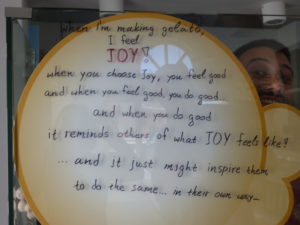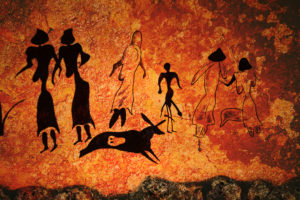Happy (almost) Independence Day! This is the day that we mark the adoption of the Declaration of Independence in our remarkable country, the start of a new experiment embarked upon by 13 colonies. What is the most famous line from the Declaration of Independence? That we as humans have “certain unalienable rights, that among these are life, liberty and the pursuit of happiness.”
Life. Liberty. Pursuit of Happiness. These ideas stir my heart. They are critical to creating a life that matters. The first two are certainly bedrocks for independence. But, what if, in celebrating independence, we’ve had it wrong for 200+ years? Before you decry me as unpatriotic, let’s explore together.
When in the course of human events, it becomes necessary for one people to dissolve the political bands which have connected them with another, and to assume among the powers of the earth, the separate and equal station to which the Laws of Nature…entitle them.
If our country’s founding leaders had wanted independence from England to be the point, they could have simply said, “We’re forming our own country! Peace out!” Instead they articulated their premise for a new governing paradigm inspired by the Laws of Nature, which models healthy interdependence. I call this Leading Naturally: leading in harmony with our true nature.
Life: The right to breath. The right to exist. The idea that your life is yours to live and you are not a cog in the machinations of another person, or country, is a powerful “new world” idea.
Liberty: Freedom from containment by another. Perhaps the point was less about England and more about a deep desire to create a new model for leading, working, and creating together.  The old world structure of power-over (hierarchy, colonization, kings) simply didn’t work anymore.
The old world structure of power-over (hierarchy, colonization, kings) simply didn’t work anymore.
The pursuit of happiness: Merriam-Webster defines happiness as a state of well-being, vitality, and contentment. This pursuit is about discovering our strengths and experimenting with value finding. It’s about using our energy and free will in pursuit of meaning and contribution which are intertwined with happiness. Yet, independence alone comes up short in the pursuit of happiness. In our lives as in nature, vitality, aka happiness, is always rooted in interdependence.
We are designed for interdependence.
Vitality is only possible with engagement—engaging with “other.” From Martin Seligman to Brene Brown, research shows that happiness requires connection. First we must be whole, independent—free as our most genuine selfand create authentic connections from that place of strength. This concept is exemplified in and often missed gem from the wise Steven Covey: “Interdependence is a choice only healthy independent people can make.”
We need each other to flourish. This is more and more true the deeper into our lives we go. The more focused on doing the beautiful things that our hearts desire, the more we need each other. The bigger the vision we have, the greater the need for interdependence!
Interdependence Energizes “Happiness”
I see the evidence of this everywhere in my life. I’ll highlight two such moments in the last few weeks.
One was on a camping trip, as I was clumping along on a sun-soaked cliff wearing a smile as big as the Pacific. As the golden hills of the Point Reyes National Park beckoned us to play, a California Condor screeched just over my pup Sequoia’s head, igniting my sense of adventure.  A second was co-delivering a workshop on the importance of human energy in business transformation. I had the gift of sharing my passion for new ways of leading only blocks from Wall Street’s famed Bull in NYC.
A second was co-delivering a workshop on the importance of human energy in business transformation. I had the gift of sharing my passion for new ways of leading only blocks from Wall Street’s famed Bull in NYC.
Two vastly different moments, to say nothing of the difference of the “costumes.” (Is anything ever as wrinkled as when you are camping? Does everyone feel as good as I do in fancy shoes?) But both are expressions of my personal experience of fulfillment and happiness.
And both are firmly rooted in interdependence.
That camping trip would not have been possible without my husband, Mikey, and his desire and ability to jam 48 hours of adventure into a six-hour backpack. And in NYC, without an incredible team the presentation would have fallen flat. These kind of moments flow through my days because of a lifetime of intentionally knitting together bonds of interdependence. Without creating space for and celebrating each person giving the gift of themselves and their work, full joy is rare. When we have each other, when we give of ourselves, we can “have it all.”
It’s important to note that not everyone’s “all” looks the same. It’s individual and that’s why it works.
When Mikey plans an intentional adventure, he is using his true gifts. He receives energy back on that offering. When my co-worker Alexis is unleashed to craft beautiful materials, she makes a conversation exponentially more stimulating and clear. When Patricia takes research deep dives, her wisdom sings with my passion to create breakthrough moments with clients.
It’s not a “I’ll sacrifice my joy for yours” world, it’s a “do what I love and it serves others” world. These are examples of what interdependence makes possible. We are free to be ourselves and that creates ripples of shared well-being (happiness) through our interdependence.
Celebrating Interdependence
This week, among the barbeques and red-white-and-blue decorations, I’m going to shine fireworks of gratitude on the people, places, and beings with whom I’m blessed to share interdependence.
I invite you to join me in this new form of honoring our great country. What interdependencies support your greatness? How might you celebrate those relationships as a nod of gratitude to the courageous men and women who founded a nation on these principles?



 This process is part of creating character and true beauty. Harmony isn’t something to finish and put away. It’s living and breathing: it needs attention to stay alive.
This process is part of creating character and true beauty. Harmony isn’t something to finish and put away. It’s living and breathing: it needs attention to stay alive. 






 Wings meant a safe place to test out ideas, fail, adjust accordingly, and keep growing. This meant allowing natural consequences. When I was 15, my sister, Gretchen, and I —the eldest pair—had our own teenage domain at the far end of the house. We painted our rooms in our favorite 70’s colors. Mine had a bright orange shag rug with a yellow rainbow bedspread and white circular donut-shaped phone (if you’re under 40 you may have to google this one). That Fall, I lied to my parents, saying there would be chaperone at a hockey game I was going to attend. There wasn’t. When they found out, instead of meting out an unrelated punishment, such as a weekend ground, we had a long conversation about trust; what it means, the consequences of lost trust, and the path to rebuilding this precious gift. The end result: we agreed on a plan for rebuilding trust. I didn’t get grounded, but I had to move closer to my parents to show them I could make good decisions and tell the truth. To do this, I lost my room and the freedom it represented. For six months, I had to swap with my younger sister, Deborah, and move into a room right across the hall from my parents. Six months of agony!
Wings meant a safe place to test out ideas, fail, adjust accordingly, and keep growing. This meant allowing natural consequences. When I was 15, my sister, Gretchen, and I —the eldest pair—had our own teenage domain at the far end of the house. We painted our rooms in our favorite 70’s colors. Mine had a bright orange shag rug with a yellow rainbow bedspread and white circular donut-shaped phone (if you’re under 40 you may have to google this one). That Fall, I lied to my parents, saying there would be chaperone at a hockey game I was going to attend. There wasn’t. When they found out, instead of meting out an unrelated punishment, such as a weekend ground, we had a long conversation about trust; what it means, the consequences of lost trust, and the path to rebuilding this precious gift. The end result: we agreed on a plan for rebuilding trust. I didn’t get grounded, but I had to move closer to my parents to show them I could make good decisions and tell the truth. To do this, I lost my room and the freedom it represented. For six months, I had to swap with my younger sister, Deborah, and move into a room right across the hall from my parents. Six months of agony!